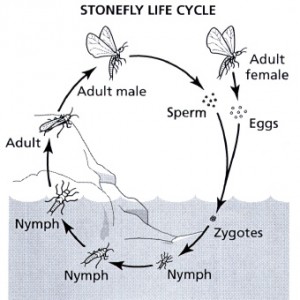I was up at the club Fri- Sunday having a reunion with our Wounded Warrior event participants. I managed to make some casts with my Spey rod below the campground. I picked up a nice 14” rainbow swinging a Hale Bob. I had more hits but did not hook anything swinging. Normally I tie a # 16-18 PT flashback about 15” off the back of the Hale Bob, but I left my tippet at the campsite. With the high sun fishing was difficult. The fish are deep in protected areas. There is no doubt there are lots of fish below the campground.
Once the sun went behind the ridge so that the river was shaded fish became very active. On the far side of the river where there is fast water and seams fish started rising. Since I had not brought my usual dry fly rod I was left to watch rainbow after rainbow rise to the hatches. The first hatch was BWO size #16. This was followed by PMD’s that were very large /thick size #16’s and perhaps #14. The fish went from aggressive rises to more of a slurping flies on the surface or just below. Which indicated they were now eating Emergers /duns before it wings dry and it can fly off. I will now be looking for as large as PMD’s that I can find. Then I started seeing small yellow stone flies. This was a surprise and makes me want to look into small yellow stones.
Mayfly live cycle
1. Eggs mature into a nymph.
2. The nymph lives on the bottom growing in stages called instars* until it matures.
3. The mature nymph (Emerger) and swims to the surface. Often when we are using a dropper, at the end of the drift, the dropper (Nymph) appears as an Emerger as it rises to the surface during the retrieve. Fish look at this as easy food. Soft hackle flies are excellent when fish are slurping as they appear as Emergers just before they break the surface.
4. The Emerger sheds it’s husk becoming a dun and floats along the surface until it’s wings are dry enough to take flight. At this time the Mayfly is very vulnerable to be eaten as it floats helplessly.
5. The dun flies into the bushes, or trees along the river bank, where it sheds it’s skin becoming an adult, (spinner).
6. The spinner leaves the trees, or bushes to begin the mating swarm.
7. The female spinner dips her eggs on the water surface, and they fall to the streams bottom.
8. After mating both male, and female spinners fall to the waters surface, and die.
Tight Lines
Tom Bartos
President & Founder
7430 Morningside Dr
Granite Bay, CA 95746
916-205-6073.



Leave A Comment
You must be logged in to post a comment.